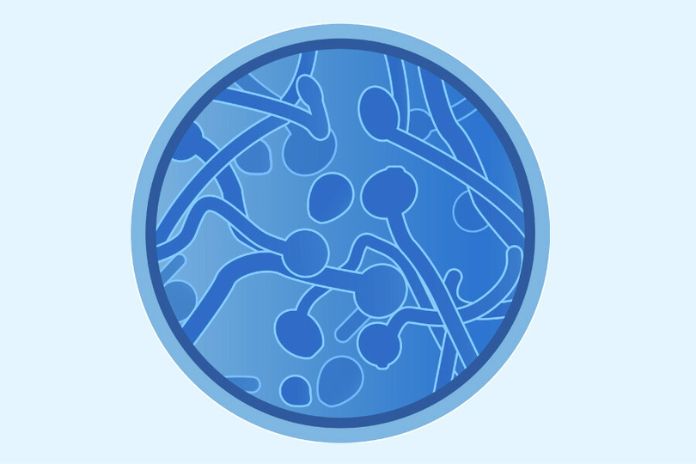What Is Candida?
Candida is a type of fungus (or machete) which, at normal levels, lives in our body without causing any damage. It is the most common fungus in humans and is constantly looking for a place to reproduce. This explains why we get infected easily. Furthermore, it is estimated to coexist with another 100,000 species of fungi, of which only 75 are pathogenic.
The species of Candida present in the human body as part of the microbial flora and which, under certain conditions, can cause Candida (intended as an infection) are Candida albicans, Candida tropicalis, Candida kefir, Candida glabrata, Candida krusei, and Candida parapsilosis. From a morphological point of view, it looks like yeast. It belongs to the saccharomyces family, i.e., that genus of fungi that includes many types of yeast used, for example, in manufacturing alcoholic beverages such as wine and beer or in the leavening of bread.
As far as our body is concerned, saccharomycetes, such as Candida, are very important as they help us digest sugars. Thanks to their ability to replicate, saccharomycetes give life to colonies that generally live inside and outside our body, favoring places such as skin and mucous membranes of the mouth, throat, intestine, vagina, and penis. Good bacteria that make up the bacterial flora and the immune system keep their number in check.
Candida Symptoms
Each type of Candida causes symptoms and manifests itself differently. This is why dividing the effects based on the affected organ is necessary.
Symptoms Of Vaginal Candida
In 90% of cases, the symptoms of vaginal candidiasis are:
- Redness and swelling of the vaginal lips, often due to constant scratching.
- Intimate itching and burning, sometimes uncontainable.
- Ulceration in the vaginal area.
- Broken skin around the genital area.
- Painful intercourse (dyspareunia), especially at the entrance to the vagina (the vulva).
- Thick, white, cottage cheese-like vaginal discharge called leucorrhoea, but which is not foul-smelling.
- Intimate dryness.
- Difficulty or increased urge to urinate.
- Pain when urinating (dysuria).
These symptoms can worsen as early as the week before your period starts.
Symptoms Of Candida In Humans
As in women, the manifestation of the infection in men is represented by some recognizable symptoms such as:
- Balanitis, that is, an inflammation of the glans penis.
- Redness.
- Burning and itching, especially after sexual activity.
- Swelling.
- Papules with pus.
- Pain when urinating.
If the inflammation also affects the foreskin, then symptoms such as:
- Yellowish secretions.
- Unpleasant smell.
- Difficulty retracting the foreskin.
Candida: Causes
The causes of candidiasis are also different based on the affected area and the variety of fungi. The risk factors, on the other hand, range from the use of antibiotics to diabetes, from stress to an unbalanced diet. Let’s see them in detail.
Male Candidiasis: The Causes
In contrast to women, Candida inflammation in men can mainly occur due to poor intimate hygiene. Often men do not retract the foreskin properly, leaving dirt, sweat, debris, bacteria, and more where they are. Another reason for transmission is the sexual route.
Although, as we have said several times, Candida is not a sexually transmitted disease, it has been shown that in 50% of cases, the partners of women affected by Candida present the microorganism in the balanopreputial sulcus. This is probably a result of injuries or rubbing abrasions that make Candida penetrate deeper into the skin or through the transmission of other microorganisms that favor the appearance of the same. Among the main risk factors we describe:
- Use of antibiotics.
- Bad eating habits.
- Use of corticosteroids or chemotherapy that weakens the immune system.
- Type 1 and 2 diabetes mellitus.
- Obesity.
- Patients on dialysis or HIV positive.
How To Treat Oral And Skin Candidiasis
Oral candidiasis usually occurs in immunosuppressed patients or frail subjects, such as patients with leukemia, premature babies, malnourished or diabetic people, HIV positive, subjects who use inhaled corticosteroids such as asthmatics, or people who use drugs for the treatment of serious diseases such as cancer. Among the factors contributing to its occurrence are:
- Improper use of antibiotics.
- Poor oral hygiene, especially after using inhaled corticosteroids.
- Presence of dentures, especially if they are not adequately cleaned.
- Lack of saliva in healthy subjects can defend the mouth from attacks by pathogens. While in people with diabetes, it is the opposite; that is, precisely, the saliva rich in glucose can lead to the formation of candidiasis.
- Poor diet or lack of iron, vitamin B12, and folic acid.
- Smoke.
Instead, they are part of the factors that increase the probability of the appearance of cutaneous Candida, for example, cosmetics, soaps, moisturizers, and all those products that can alter the conditions of the skin, in particular, the antibacterial varieties.
Cures And Treatments
Although Candida is very infectious, treatment is usually simple and effective. Within a few days, the symptoms usually subside. Treatment for both men and women involves using antifungal drugs, which have different administration times to meet everyone’s needs (from single administration up to 6 days). In some more severe cases, the treatment may last longer. Treatments can be in the form of:
- Cortisone cream is to be applied directly to the area affected by the infection.
- Eggs, candles, tablets, foams, and douches for women.
- Tablets to be taken by mouth, such as fluconazole or itraconazole, if the infection has affected the vagina or penis, or imidazole derivatives, such as clotrimazole or econazole, if the affected areas are the mouth and are cute. The doctor must prescribe the drugs, and as a preventive measure, it is recommended to take lactic ferment simultaneously to help preserve the intestine.

